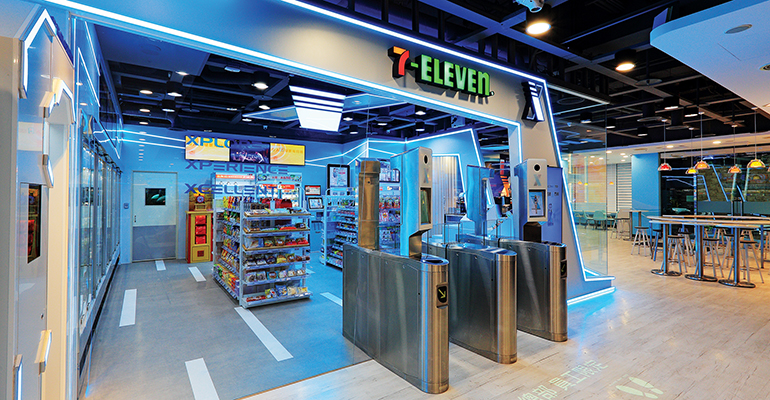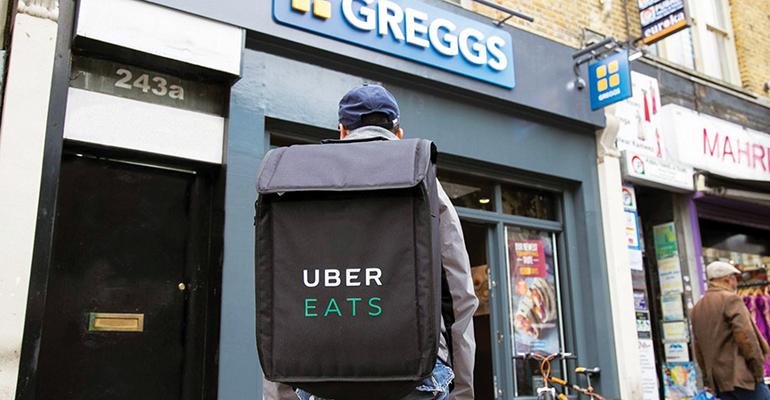The digitization of the restaurant experience — and the many opportunities that stem from it — is one of the most important trends in foodservice. Smartphone ownership is rising worldwide, and a growing number of consumers are using their devices to interact with restaurant brands, researching menus, placing orders for takeout or delivery, and earning or redeeming rewards.
According to Euromonitor International, 9 percent of all foodservice orders will be placed online by 2022, representing about $292 billion in U.S. dollars. This medium offers new ground for engagement, and effective digital strategies are directly contributing to the success of many top global chains.
Below is a look at the prevailing trends in restaurant technology and how top foreign restaurant chains in this year’s International 25 ranking are tapping into them.
Driving incremental sales with app-based delivery
Delivery is one of the most important and impactful digital opportunities in foodservice today. Fueled by innovation from third-party delivery players, the delivery landscape completely transformed in just a few years, both in terms of who can participate and how consumers find and place orders.
And there’s still room for growth. Delivery is now the fastest growing dining occasion in foodservice, and global delivery sales are expected to grow 69 percent over the next five years, adding an incremental $110 billion in U.S. dollars by 2022.
For many restaurant operators, delivery is an incremental sales opportunity, particularly for concepts that haven’t traditionally offered the service. Third-party delivery players have made it possible for these players to quickly generate additional revenue through delivery.
Greggs, for instance, the UK-based chain of grab-and-go bakery products, is rolling out delivery across many of its outlets with Uber Eats. There is no minimum spend on delivery orders (though there is a delivery fee of $3.22 in U.S. dollars), which is important for a chain whose average spend per transaction in the U.K. is equal to just $7.10 in U.S. dollars.
The streamlined experience that app-based delivery offers is also highly appealing for consumers. Consumers do not have to spend time thinking about delivery coverage zones, or who offers it. They can simply open an app and discover something new. Apps make searching for options, placing an order and making payment more seamless. Order history and payment details are stored, and app-based algorithms personalize the experience with hyper-relevant recommendations and offers for the individual consumer. This type of delivery is new and attractive for consumers, and that is fueling sales in every major market.
Differentiating through digital engagement
Digital integration also allows operators to engage the consumer in meaningful ways, driving loyalty and setting them apart from the competition. Japan-based beef bowl chain Yoshinoya, for instance, offers a variety of digital features in its proprietary app to encourage loyalty. Consumers can pre-pay for discounted pitchers of beer they own “virtually” to be redeemed at any store across multiple visits, if desired. The app also has a step-counting feature, encouraging consumers to use the app in their everyday lives to earn discounts on orders by walking. This kind of engagement is an important way to differentiate as a brand, especially in highly competitive segments such as quick service.
Enhancing the in-store experience
Digital innovation is redefining the in-store experience as well. At 7-Eleven’s recently launched concept store 7-Eleven X in Taiwan, familiar features like in-store seating, self-service microwaves and smartphone charging outlets, are paired with facial recognition technology for a true departure from the standard shopping experience. With facial recognition technology, customers are recognized and greeted at the door, and their financial details are recalled at checkout for faster, more seamless transactions. Other features include voice interactivity, self-service scanners, centrally updated electronic price tags and refrigerator doors that automatically open when they detect a customer.
 JD Wetherspoon, a UK-based chain of pubs, is also looking to streamline the ordering and payment experience. The Wetherspoon app, launched in early 2017, allows customers to place orders from their tables. They can automatically reorder rounds of beers, for instance, or receive and pay the final bill. The chain’s willingness to embrace digital ordering has helped it grow sales year over year, despite operating fewer outlets.
JD Wetherspoon, a UK-based chain of pubs, is also looking to streamline the ordering and payment experience. The Wetherspoon app, launched in early 2017, allows customers to place orders from their tables. They can automatically reorder rounds of beers, for instance, or receive and pay the final bill. The chain’s willingness to embrace digital ordering has helped it grow sales year over year, despite operating fewer outlets.
Digitizing the restaurant creates a more integrated, personalized and more seamless experience, and it will be a huge opportunity moving forward. The largest global chains, including many on the International Top 25 list, are embracing digital strategies to enable new ordering channels like delivery, to deepen their relationships with their customers and stay relevant with modern consumers have come to expect modern dining experiences.
Stephen Dutton is a senior analyst for Euromonitor International.




